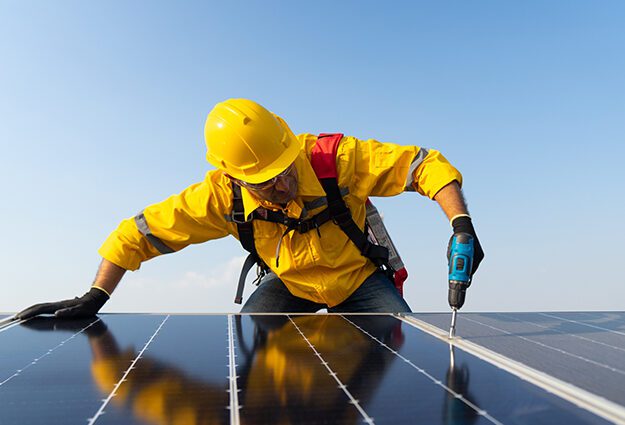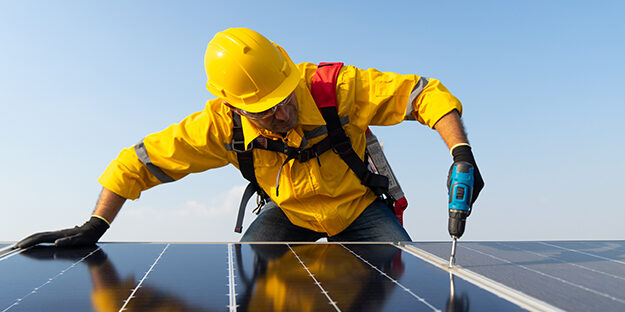How to maximize energy-efficiency incentives to increase cash flow
Jan. 24, 2024
This paid piece is sponsored by Eide Bailly LLP.
A version of this article first appeared on EideBailly.com.
The Inflation Reduction Act, or IRA, significantly enhanced several energy-efficiency tax credits and deductions, including the New Energy Efficient Home Credit (Section 45L) and the Energy Efficient Commercial Buildings Deduction (Section 179D).
Here’s how to maximize the potential benefits.
New Energy Efficient Home Credit (Section 45L)
What is Section 45L?
Section 45L is a credit of up to $2,000 per unit for properties placed in service prior to Jan. 1, 2023, and up to $5,000 per unit for projects placed in service between Jan. 1, 2023, and Dec. 31, 2032.
How has the IRA enhanced Section 45L?
The IRA extends Section 45L at the current rate of $2,000 per unit for single-family and multifamily of three stories and less through the end of 2022. Also, Section 45L is extended at an increased value for buildings developed through the end of 2032.
Under the IRA extension, energy-efficient single-family homes and multifamily developments of three stories or less can receive a tax credit of $2,000 per unit, and manufactured homes can receive a tax credit of $1,000 per unit.
For qualifying Section 45L projects placed in service after Jan. 1, 2023
The 45L residential credit increases for projects completed in 2023, with multifamily homes starting at a base credit of $500 per unit, and a bonus credit of $2,500 per unit for projects meeting prevailing wage and apprenticeship requirements. Additional credits are available for projects meeting the DOE Zero Energy Ready home program requirements.
For single-family homes and manufactured homes, the base credit is $2,500 per unit, increasing to $5,000 per unit for projects meeting prevailing wage and apprenticeship requirements. Additionally, starting in 2023, there are no limits on the height of the qualifying project or energy efficient multifamily projects pursuing 45L residential credits.
Energy Efficient Commercial Buildings Deduction (Section 179D)
What is Section 179D?
Section 179D is a deduction of up to $1.88 per square foot for properties placed in service prior to Jan. 1, 2023, and up to $5 per square foot for projects placed in service between Jan. 1, 2023, and Dec. 31, 2032.
The 179D energy deduction originally was introduced in the Energy Policy Act of 2005 as an annual extender, meaning the provisions sunset and were renewed every few years. In late 2020, Section 179D was made permanent at $1.80 per square foot in the Consolidated Appropriations Act of 2021, indexed to inflation.
How has Section 179D changed?
Starting in 2023, the base deduction rate starts at 50 cents per square foot for 25 percent improvement against a baseline model and increases incrementally up to $1 per square foot for 50 percent improvement.
A bonus deduction is available for projects meeting prevailing wage and apprenticeship requirements. This bonus deduction starts at $2.50 per square foot and increases 10 cents for each percentage improvement up to $5 per square foot.
For qualifying Section 179D projects placed in service after Jan. 1, 2023
The IRA modifies the previous lifetime limit on using the Section 179D deduction to a three-year cap, meaning a building can be eligible for the 179D deduction every three years, assuming at least one of the systems contributing to energy efficiency has been properly renovated.
This deduction is now applicable to real estate investment trusts and still applies to private building owners along with certain tax-exempt entities who can allocate the deduction to the qualified designers. Qualified designers are generally architects, engineers and contractors who are primarily responsible for designing the property.
Qualified tax-exempt entities include:
- Federal government.
- State or local government entities.
- Indian tribal governments.
- Other tax-exempt organizations including not-for-profit hospitals.
Navigating a new era of energy-conscious practices
Tax credits and deductions exist to help you save money and promote clean energy infrastructure. These incentives are available for the next 10 years and allow for proactive planning, including:
- Accounting and tax departments incorporating these incentives into their capitalization policy and fixed asset ledgers.
- Environmental, sustainability and governance officers to fund and advance their organization’s goals.
- Developers, owners, contractors and architects including these incentives during design and construction.
Working alongside an experienced team of advisers with a proven track record in the energy-efficiency space will help you maximize these new opportunities. Eide Bailly’s energy-efficiency specialists and business advisers are here to evaluate your eligibility and collaboratively optimize the full potential of these energy-efficient incentives.








